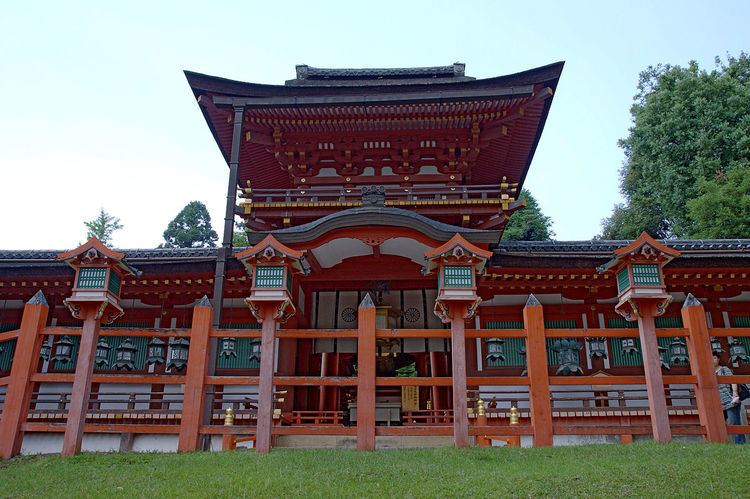Founded 768 Website www.kasugataisha.or.jp | Phone +81 742-22-7788 | |
 | ||
Type Twenty-Two ShrinesChokusaishaBeppyo jinja, ShikinaisyaFormer kanpeitaisha Reisai Kasuga-no-matsuri(Kasuga-sai: 春日祭) (13th March) Similar Tōdai‑ji, Kōfuku‑ji, Nara Park, Kasuga, Mount Wakakusa | ||
Nara japan wonderful day in kasuga taisha
Kasuga Grand Shrine (春日大社, Kasuga-taisha) is a Shinto shrine in the city of Nara, in Nara Prefecture, Japan. Established in 768 AD and rebuilt several times over the centuries, it is the shrine of the Fujiwara family. The interior is famous for its many bronze lanterns, as well as the many stone lanterns that lead up the shrine.
Contents
The architectural style Kasuga-zukuri takes its name from Kasuga Shrine's honden (sanctuary).
Kasuga Shrine, and the Kasugayama Primeval Forest near it, are registered as a UNESCO World Heritage Site as part of the "Historic Monuments of Ancient Nara".
The path to Kasuga Shrine passes through Deer Park. In Deer Park, deer are able to roam freely and are believed to be sacred messengers of the Shinto gods that inhabit the shrine and surrounding mountainous terrain. Kasuga Shrine and the deer have been featured in several paintings and works of art of the Nambokucho Period. Over three thousand stone lanterns line the way. The Man'yo Botanical Garden, Nara is adjacent to the shrine.
History
The shrine became the object of Imperial patronage during the early Heian period. In 965, Emperor Murakami ordered that Imperial messengers were sent to report important events to the guardian kami of Japan. These heihaku were initially presented to 16 shrines including the Kasuga Shrine.
From 1871 through 1946, Kasuga Shrine was officially designated one of the Kanpei-taisha (官幣大社), meaning that it stood in the first rank of government supported shrines.
Festivals
During the festivals of Setsubun Mantoro (February 2–4) and Obon Mantoro (August 14–15), thousands of shrine lanterns are all lit at once.
March 13 is the Kasuga Matsuri ("Monkey Festival"), which features gagaku and bugaku dance performances.
Kasugayama Primeval Forest
Kasugayama Primeval Forest is primeval forest of about 250ha near the summit of Kasugayama (498m), and contains 175 kinds of trees, 60 bird types, and 1,180 species of insects. In this area adjacent to Kasuga Grand Shrine, hunting and logging have been prohibited since AD 841. Because Kasugayama has long been tied to Kasuga Grand Shrine worship, it is regarded as a sacred hill. The forest backdrop of the Kasuga Grand Shrine's buildings today has been unchanged since the Nara period.
